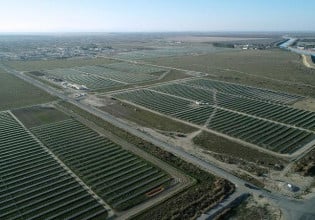Using Artificial Photosynthesis to Produce Hydrogen Fuel
Researchers from the University of Rochester are utilizing an artificial photosynthesis system to produce hydrogen fuel in a fully sustainable way.
Artificial photosynthesis is an emerging field of research that aims to replicate the natural process of photosynthesis but in an artificial system. Researchers from the University of Rochester ‒ Kara Bren, the Richard S. Eisenberg Professor in Chemistry, and Todd Krauss, a chemistry professor ‒ recently presented their work on mimicking the natural process of photosynthesis in the journal PNAS. The study involves using bacteria to transport electrons to a nanocrystal semiconductor photocatalyst.
Photosynthesis. Image used courtesy of Pixabay
The study results reveal that Shewanella oneidensis bacteria, sourced from Lake Oneida in upstate New York, provide a cost-effective and highly efficient means of supplying electrons to the artificial photosynthesis system.
The researchers believe they can use this system to find a novel and efficient way to extract hydrogen from water as fuel, which would be a large breakthrough for renewable energy.
Sourcing Electrons
For nearly a decade, Krauss's and Bren's research teams have been dedicated to advancing an efficient system that combines artificial photosynthesis with semiconductor nanocrystals, serving as light absorbers and catalysts.
What they lacked in their experiments was an efficient way to source and transfer electrons to the nanocrystals from the electron donor. Other researchers have used Vitamin C to transfer electrons back to the system, but over time this method becomes costly.
Krauss and Bren discovered that Shewanella oneidensis, a bacteria from a nearby lake, proved to be a low-cost and efficient electron donor.
The biggest difference between their research and other attempts to combine nanostructures and bacteria is that Krauss and Bren did it “backward.” While previous endeavors have involved extracting electrons from nanocrystals and transferring them to bacteria for fuel production, this approach is the first to reverse the process, utilizing bacteria as an electron source for a nanocrystal catalyst.
In this setup, Shewanella oneidensis MR-1 supplies electrons to a Cadmium Selenide (CdSe) nanocrystal photocatalyst, allowing hydrogen production using visible light. Unlike other systems that rely on external electrical energy, this system operates without additional power. When illuminated at 530 nm, it generates a continuous supply of hydrogen for 168 hours, and this duration can be extended even more by providing the necessary nutrients to the bacteria.
Is Hydrogen Fuel Really Clean?
Globally, there is a growing interest in hydrogen fuel as a clean and versatile energy source. With its potential to address climate change and foster sustainability, hydrogen fuel has emerged as a promising alternative to traditional fossil fuels.
Hydrogen pipeline. Image used courtesy of Adobe Stock
Hydrogen can be derived from diverse sources such as water, natural gas, and biomass. Unlike fossil fuels, hydrogen combustion emits only water vapor, making it a highly attractive option for a sustainable energy future.
Hydrogen fuel possesses a remarkable energy density, packing a significant amount of energy per unit of weight. This makes it suitable for various applications, notably fuel cells. Hydrogen production can be achieved at both small and large scales, enabling its utilization in diverse settings ranging from household applications to large-scale industrial manufacturing.
The Rochester team believes a future where individual homes could tap into the sun's power by utilizing vats and underground tanks to produce and store small amounts of hydrogen is not out of the question.
This would enable people to power their homes and vehicles with affordable and environmentally friendly fuel. Hydrogen fuel cells are used to power trains, buses, and cars. However, most available hydrogen for these systems is derived from fossil fuels and isn’t currently a clean fuel source.
This is why it’s important to shift towards cleaner sources of hydrogen production, such as using Krauss and Bren’s artificial photosynthesis system.
Producing Clean Hydrogen Fuel
A system mimicking natural photosynthesis requires three things: a light absorber, a catalyst, and an electron source. These components are immersed in water, and a light source supplies energy to the light absorber. The absorbed light energy enables the catalyst to combine electrons from an external source with protons from the surrounding water, producing hydrogen gas.
The goal is to produce hydrogen fuel from water through a light-driven reaction, eliminating reliance on fossil fuels during the production process. This approach ensures the creation of a truly clean fuel, free from the environmental impacts of traditional fossil fuel extraction and consumption. By harnessing sunlight and utilizing water as the primary source, this sustainable method aims to generate hydrogen fuel without contributing to greenhouse gas emissions or depleting finite resources.
In essence, the objective is to unlock the potential of hydrogen as a renewable and environmentally friendly energy source, thereby reducing dependence on fossil fuels and paving the way for a more sustainable future.








